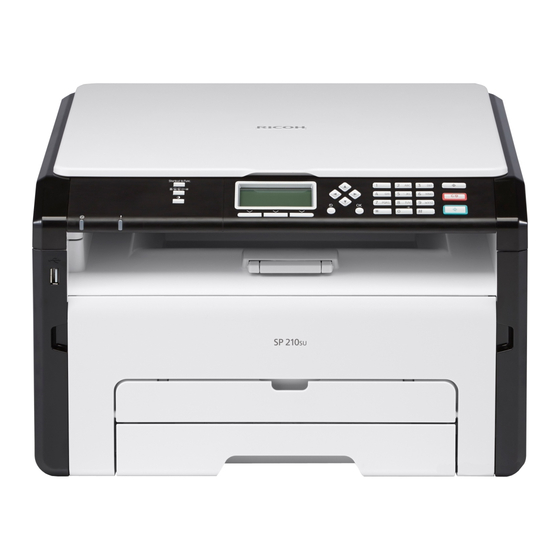
Table of Contents
Advertisement
TABLE OF CONTENTS
How to Read This Manual................................................................................................................................. 7
Introduction..................................................................................................................................................... 7
Legal Prohibition............................................................................................................................................. 7
Disclaimer........................................................................................................................................................7
About IP Address............................................................................................................................................8
Differences in Performance/Functions between Different Models.............................................................8
Note to Administrator.................................................................................................................................. 10
Model-Specific Information.............................................................................................................................12
User Information on Electrical & Electronic Equipment.............................................................................13
Environmental Advice for Users..................................................................................................................13
Note for the Battery and/or Accumulator Symbol (For EU countries only)............................................14
Notes to Users of Facsimile Unit................................................................................................................. 15
Notes to Users in the State of California....................................................................................................16
ENERGY STAR Program.................................................................................................................................. 17
Guide to Components......................................................................................................................................19
Exterior..........................................................................................................................................................19
Exterior..........................................................................................................................................................21
Interior...........................................................................................................................................................23
Control Panel................................................................................................................................................23
About Operation Tools.................................................................................................................................... 28
Initial Setup....................................................................................................................................................... 29
Configuring Network Settings......................................................................................................................... 30
Configuring the IP Address Settings........................................................................................................... 30
Wireless LAN Setup.....................................................................................................................................32
Configuring the IP Address Settings Using the Smart Organizing Monitor............................................ 34
Wireless LAN Setup.....................................................................................................................................36
Supported Paper.............................................................................................................................................. 39
Non-Recommended Paper Types...................................................................................................................41
Print Area.......................................................................................................................................................... 42
...................................................................................................... 13
.......................................................................................................16
1
Draft 2014/01/07
Advertisement
Table of Contents

















Need help?
Do you have a question about the MFSP213SFNW1 and is the answer not in the manual?
Questions and answers